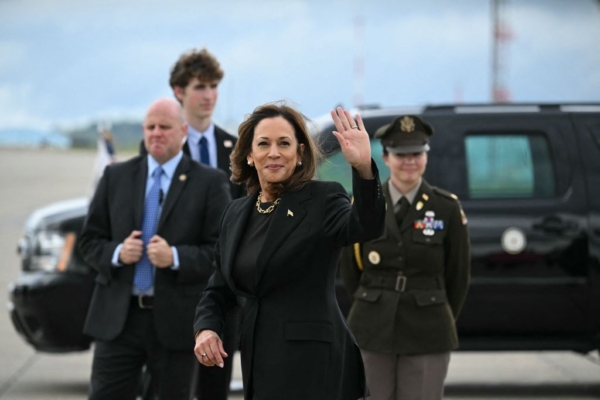**US Vice President’s Election Tightening in Key States**
According to reports from American media, some top allies of Vice President He Jinli privately expressed their belief that her presidential campaign will focus on Pennsylvania and Michigan. He Jinli plans to capture the White House through the “blue wall” states, even if she faces obstacles in the “sun belt.”
On Thursday, Axios reported that Democrats are becoming increasingly concerned that He Jinli, who had a strong start to her presidential campaign, is now facing a bottleneck and even a slight decline in momentum. These Democrats suggest that her rapid media blitz, massive spending, and generally favorable coverage seem to have not had much impact (if any).
An official from He Jinli’s team told Axios, saying, “We are facing a polarized electorate – with each cycle, the number of swing voters is becoming smaller.”
Pennsylvania is a focal point of the campaign for both parties. According to The New York Times, He Jinli, former President Trump and their allies plan to spend $350 million on TV ads in Pennsylvania, while the second most spending state, Michigan, will see $210 million.
Trump returned to Butler, Pennsylvania last Saturday, holding a large rally with billionaire Musk. This location was where Trump faced an assassination attempt for the first time, making his return significant. Trump also held rallies in Scranton and Reading on Wednesday.
He Jinli is set to make her tenth trip to Pennsylvania next Monday. Her campaign team stated that on Saturday alone, they conducted door-knocking operations in the state, reaching a total of 100,000 households.
Michigan presents a more complex situation, being a gathering place for union members, Arab Americans, and young people. Representative Elissa Slotkin warned donors in September that He Jinli was “in trouble” in Michigan, as shown by internal polling.
Another Michigan representative, Debbie Dingell, stated that neither He Jinli nor Trump have a lock on the state. Dingell is currently campaigning seven days a week.
“People need to see He Jinli in person,” Dingell said. “She needs to visit union halls and talk to people. Regardless of how you view Trump, he is hands-on.”
Different polls show different trends. A recent Quinnipiac poll announced on Wednesday that “with racial tensions, cracks appear in the blue wall,” with He Jinli slightly leading in Pennsylvania, while Trump maintains an advantage in Michigan and Wisconsin.
A poll conducted by The Detroit News this week indicated that He Jinli is “seemingly gaining momentum” in Michigan, leading Trump by three percentage points.
Considering the margin of error in the two polls, it essentially amounts to a tie statistically, reflecting the real sentiments of senior officials from both parties and the true state of the 2024 election.
Out of the 50 states in the US, 43 lean towards either the Democratic Party or the Republican Party. Hence, the remaining seven battleground states with close support from both parties have become recognized swing states. However, the strategies of the two parties differ. The Democrats hope to win in the “blue wall” states, while the Republicans have been focusing on the “sun belt.”
He Jinli aims to replicate Biden’s 2020 success and win again in the three “blue wall” states of Pennsylvania, Michigan, and Wisconsin.
Trump’s campaign team has set its sights on the sun belt, specifically Pennsylvania, North Carolina, and Georgia. If he wins these three states, he will return to the White House.
Pennsylvania has 19 electoral votes, ranking fifth in the number of electors in the US presidential election, making it the state with the most electoral votes among swing states.
Georgia has 16 electoral votes. Biden was the first Democratic presidential candidate to win the state since President Clinton in 1992, which was related to the voting rates and enthusiasm of African American voters.
North Carolina has 16 electoral votes. North Carolina may “lean Republican,” but Trump only won the state by a 1.3 percentage point margin in 2020.
Michigan has 15 electoral votes. Over the past decades, Michigan has mostly supported the Democratic Party, with the state’s labor unions being a key group that both candidates are competing for.
Wisconsin has 10 electoral votes. It was previously seen as a reliable blue rust belt state until Trump’s narrow victory in 2016 and solidified his battleground state status. Subsequently, Biden narrowly defeated Trump in Wisconsin in 2020, flipping the situation.

